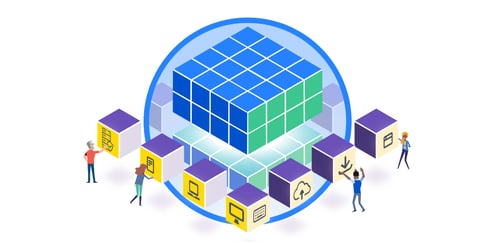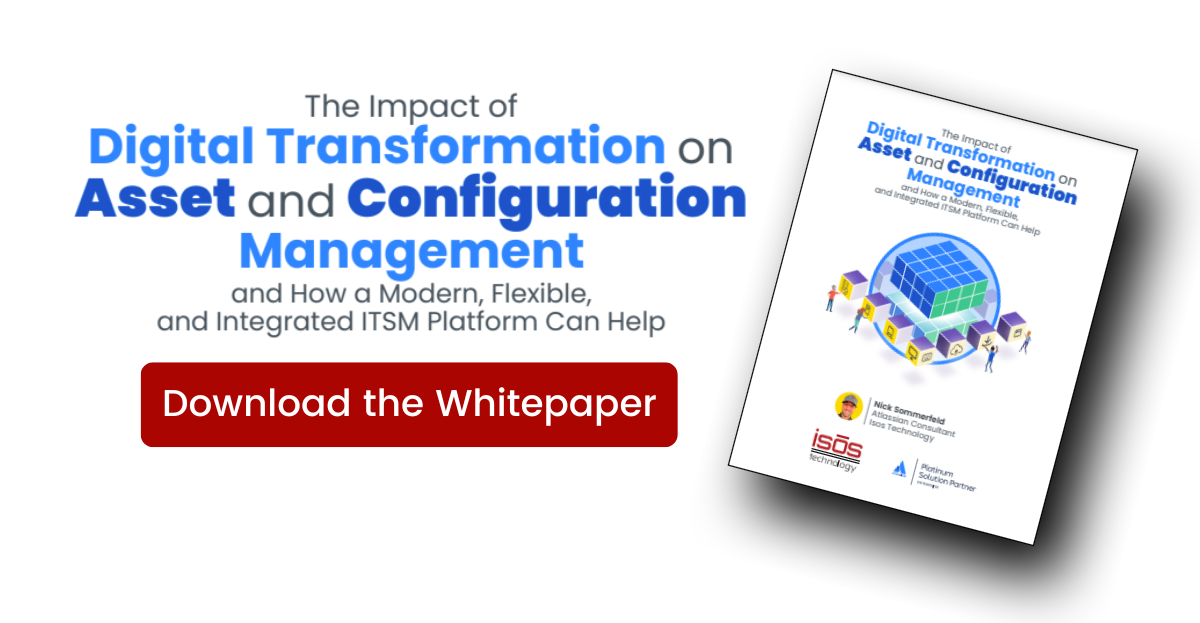
Digital transformation is driving complexity in asset and configuration management, companies are using more SaaS applications than ever, and it’s not just in IT. Departments all across the enterprise are using them, including accounting, facilities, human resources, legal, marketing, and sales. As a result, everyone has to keep track of more software, more hardware, and more information than ever.
To meet this growing need, Atlassian purchased Mindville, makers of the leading asset and configuration management software, Insight. Since then, Atlassian has continued to augment the software and integrate it with Jira Service Management.
Today, it’s known as Atlassian Assets, and the functionality is available in JSM Cloud Premium and Enterprise. It’s an incredibly powerful tool for traditional asset and configuration management use cases, but to help you understand just how broadly it can be applied, we’ve rounded up five real-world examples of non-traditional assets.
People
When you configure people as assets, you can associate data with them like their phone number, email address, department, or location. Then, when they submit a ticket, the agent handling the request already has this information, meaning that they don’t need to manually enter it. You can also link employees to their managers and set up automated approvals for hardware, software, and other requests.
Clients
When you configure clients as assets, you can create a customized JSM service portal experience for each of them. Then, when a client comes to the portal, they not only see their company’s name, but the fields they see are auto-populated with values associated with their company, like which of your products they use. You can even route their tickets to a specific service desk agent or account manager, if one is assigned to them.
Products
Building on the previous example, if you configure your products, features, and apps as assets, you can customize the client-facing service portal experience even more. For example, when a customer submits a ticket about a problem with a specific product or related app, instead of the ticket auto-populating with every product associated with that customer’s company, it instead populates with a brief list of only the products that particular individual uses.
Departments
When you configure departments as assets, you can associate the software and services they use with them. Then, if any apps they use require regular auditing, you can open tickets for it to help them stay in compliance. If you link departments to software, you can quickly see who is impacted by issues and outages, get a better grasp on the organizational impact, and keep everyone updated.
Databases
Virtually any type of data can be imported into Assets and recognized as an asset. Every team within your organization, including IT, Accounting, Facilities, Human Resources, Legal, and Marketing all have assets and information they manage. All of these teams can benefit from Assets, whether it is providing more context around a ticket, or managing information more efficiently and accurately.
For example, a finance team bringing in a list of charge numbers instead of keeping them in an Excel spreadsheet. At Isos, we’ve even imported large quantities of important historical data from old SQL databases into Assets, so a customer’s large marketing team could have that information available to them in Jira.
How to Get Atlassian Assets
Assets and is available natively in Jira Service Management Cloud Premium and Enterprise. If you’re using Data Center, you can get the Assets app.
Learn More
To learn more about Atlassian Assets, download our white paper: The Impact of Digital Transformation on Asset and Configuration Management.
Sign up to receive more great content
Learn more about Atlassian and how Isos can help by signing up to receive our latest blogs, eBooks, whitepapers and more.














